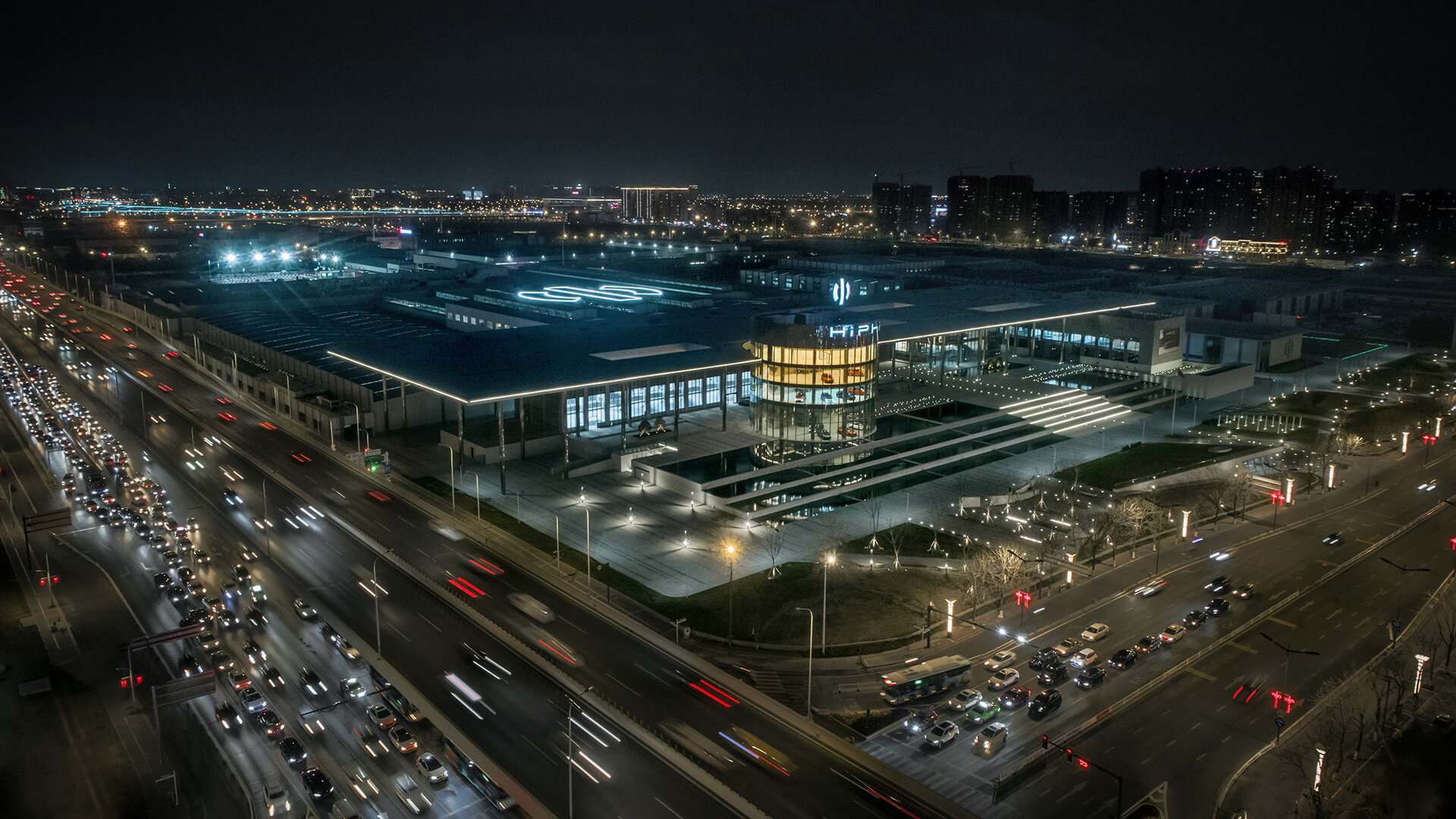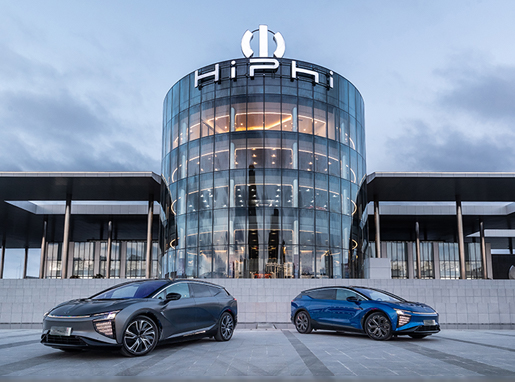When I finally caught the high-speed train to Yancheng after struggling through traffic and collapsed in my seat, I was drawn to the conversation from a few rows back. And it turned out they too had been invited by GAC to visit the Yancheng factory. Glancing around, I realized all the passengers in this car were dressed as journalists, carrying photography equipment. It dawned on me that this car might have been chartered by GAC…
A few weeks ago, a colleague entrusted me with test-driving a GAC vehicle, and I was happily sharing the news in a group chat when everyone poured cold water on my enthusiasm, saying “This car won’t work,” “It’s made by KIA,” “Who will buy it when it starts at 800,000?” and “Aside from the cool doors, it has nothing going for it~~~”.
So, I asked, had anyone driven this car? The group fell silent, and finally someone said, “Remember to share your experience with us and post more photos. Give us an honest review!”
Now I’m in Yancheng, paying a visit to the GAC City Boutique Factory to investigate what sets it apart.
After a long journey, I finally arrived at the hotel, where the staff arranged an evening tour of the factory. I thought to myself, “The factory must be in the suburbs. What could there be to see late at night?”
After a fifteen-minute drive, a huge, glowing GAC logo suddenly came into view. Isn’t this in the city center of Yancheng? How could they build a factory here? Looking out the window at the traffic and residential areas nearby, I was sure of it! GAC had built a factory in the city center! I hoped we weren’t just there to visit a showroom. Even a large one would be too much to consider!

Later, a colleague told me that this used to be a KIA factory, but it had been transformed into the modern, intelligent GAC City Boutique Factory, a building that other media have called an “extraterrestrial object” and has become a new landmark of Yancheng.
Once off the train, I noticed that the urban factory had no walls, and nearby residents could walk into the factory compound for a casual stroll and photoshoot. At the same time, it raised the question of noise and pollution from the factory’s manufacturing processes, including welding and painting work. Would that affect the nearby residential area?
I asked the accompanying staff and learned that during the renovation of the old factory, foreign designers were invited to design and plan the factory, which blended with the surrounding environment. The design without walls allowed nearby residents to stroll and take pictures at any time. Moreover, the production noise was minimal, and I didn’t feel overly affected by it during the entire visit.How to achieve harmonious development between industrial production and living environment has always been a difficult problem for major manufacturers. However, the factories in the Gaohe city not only do not cause pollution and noise, but also provide a place for nearby residents to relax and become a landmark building in Yancheng. No wonder it’s called “City Factory”, because the factory has been integrated into the city.
Suddenly I remembered that the production factory of Volkswagen’s luxury D-class car, the Phaeton, was also like this. In the center of Dresden, Germany, there is a transparent car factory on the banks of the River Elbe. One of its unique design intentions is to tailor-made cars for every Phaeton owner. Customers can even customize their cars according to their personal preferences from order confirmation to the birth of a new car through private customer managers. They can also participate in the entire manufacturing process personally and choose to watch the most decisive steps in the car production process on site. Finally, they can also pick up the car at the factory.
Nowadays, Gaohe’s city boutique factory is the same. Customers can customize their vehicles according to their own needs, visit the factory in person, check the manufacturing process and automatic assembly of their cars, and finally pick up their cars at the factory. Although some people may say that this is just copying the idea of the Phaeton, the Phaeton was discontinued in 2016, and the Gaohe factory has continued the idea of the Phaeton factory, allowing customers to personally experience the entire process of their car production. Moreover, the large six-story display building really impressed me, even though I am not a car owner.
Entering the factory for a visit, I found that this is the most intelligent digital factory I have ever seen so far. Although it is not as automated as the workshops of established factories such as BMW and Porsche, multiple complex production collaborative system functions have adopted the principle of “digital twin”, which made me recall the term I saw before.
In simple terms, digital twin is to create a digital “clone” based on a device or system.
Perhaps you would say, isn’t this just CAD?
In fact, it is not. Compared with design drawings, the biggest feature of the digital twin is that it is a dynamic simulation of the body. In other words, the digital twin can “move”.The “movement” of the digital twin comes from the physical design model and the sensor feedback and historical data of the digital twin. In other words, the real-time status of the system and the external environmental conditions are reproduced on the digital twin.
If engineers need to make system design changes or want to know how the system responds under special external conditions, they can conduct “experiments” on the digital twin. This not only avoids the impact on the physical system but also improves efficiency and saves costs.
This also reminds me of the four dimensions of “intelligent, digital, interconnected, and environmentally friendly” that the tour guide repeatedly mentioned. It indeed satisfies these four dimensions upon careful consideration.
The first stop of the tour was the body welding workshop, where only a few operators calmly operate the machine screens in a large area. Over a hundred robots rotate and weld the car body very quietly, but occasionally sparks splatter and land on the visitor walkway, making it quite exciting and nerve-wracking despite the operators at work, as if nothing has happened.
When we came to the painting workshop, as a hay fever patient, I was amazed that I did not smell any paint odor. Behind the glass, there were DuPont’s third-generation robots, known as the giant in the coating equipment field. The accompanying technical personnel told me that the robots can support more than ten custom color options for the customers. Compared with some auto manufacturers, the number of colors that can be customized is indeed not many. I looked at the HiPhi X flagship 4-seater’s exclusive titanium gray paint sample and touched it, and found it very delicate, which can match the original matte paint of my friend’s AMG GTR under the illumination of the lights.
Finally, we arrived at the final assembly workshop, where we saw the AGV unmanned transport vehicles carrying accessories, shuttling on the workshop floor, and every step of vehicle assembly was presented in front of us.Arriving at the autonomous driving zone, I heard the media’s cry, “Look! None of the cars have drivers! They are all on autonomous driving!” This is based on Gaohe’s self-developed vehicle-road coordination autonomous driving technology, where the vehicle can automatically drive to the designated shipping area without a driver after being taken offline. This technology can also be applied to automated valet parking (AVP), unmanned shifting, and unmanned vehicle extraction, as well as other intelligent parking scenarios.
Although it requires sensors to be installed on both sides of each route to achieve this function, it has indeed improved efficiency by eliminating the need for manual operation to bring a vehicle offline and park it. At this moment, the slogan of “Scene Definition Design, Software Defined Vehicle, Co-Creating Defined Value” displayed on the wall by Hozon Motors caught my eye, and Hozon has positioned itself as a technology company different from other domestic new energy brands from the root.
Nowadays, the pricing of Gaohe HiPhi X determines its consumer group. Although some users sniff at the price, thinking it is too expensive, “Why should a domestically-produced electric vehicle made by Kia be sold at such a high price?” However, thinking back to the prices of Tesla’s Model S and Model X and the attitude of Chinese consumers at that time, to now the sales of Model 3 and Y. Despite the numerous problems that Gaohe still has, the company has opened up the domestic high-end electric vehicle market and has begun deliveries under the heavy pressure of the market and consumer prejudice.
In Ding Lei’s words, “Gaohe HiPhi X is not just a car, but it truly realizes the concept of software-defined vehicle.” When someone inquired about the car models that HiPhi X compares to, the response was that Gaohe is an innovative enterprise that does not need to measure itself against a particular vehicle. I thought carefully about it at that time. Nowadays, with the rapid development of China’s new energy industry, it is not only necessary to have slogans, strength, and technology, but also the correct attitude toward new energy. Ultimately, products still need to face the market. Can Gaohe be acknowledged by the public?
This article is a translation by ChatGPT of a Chinese report from 42HOW. If you have any questions about it, please email bd@42how.com.
